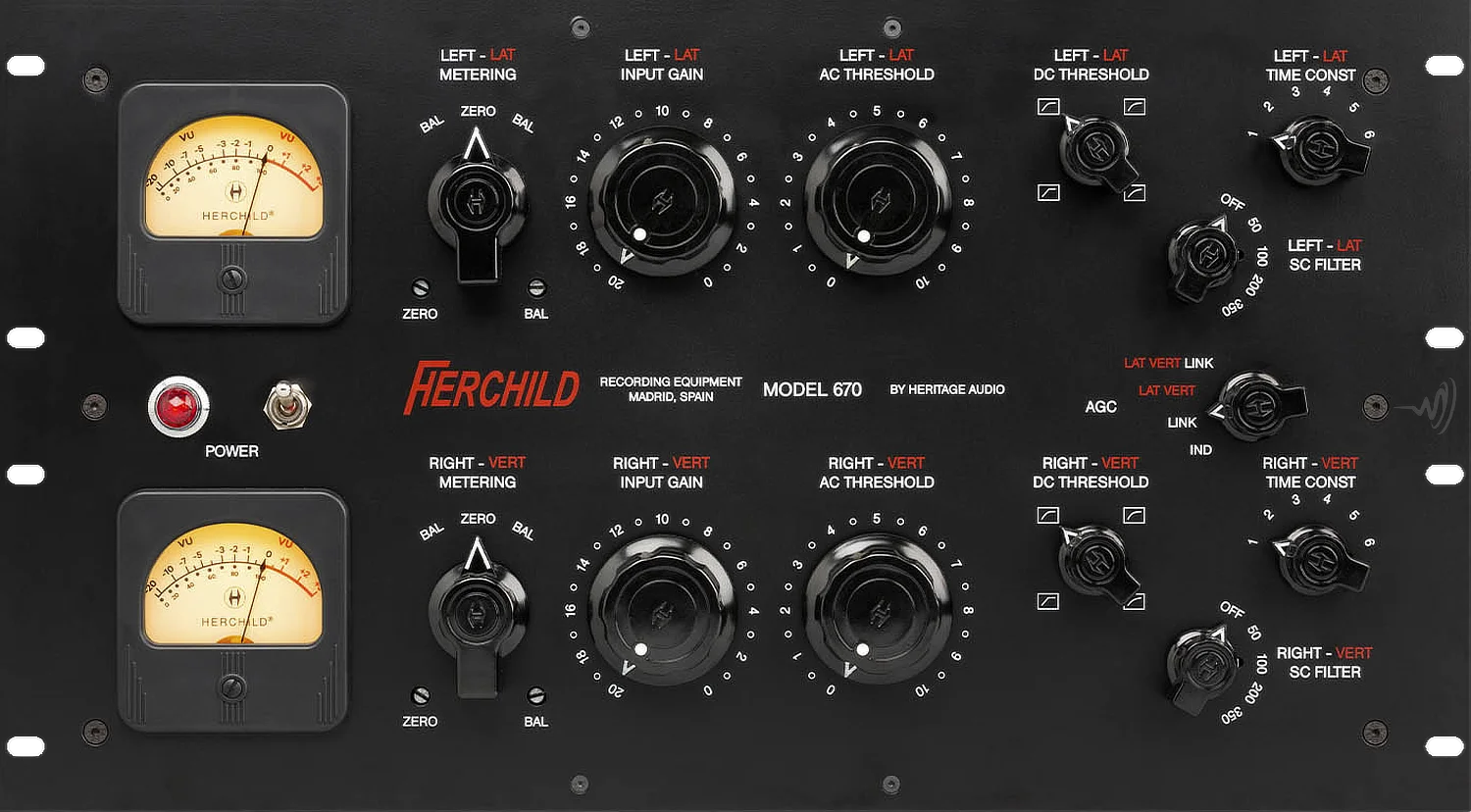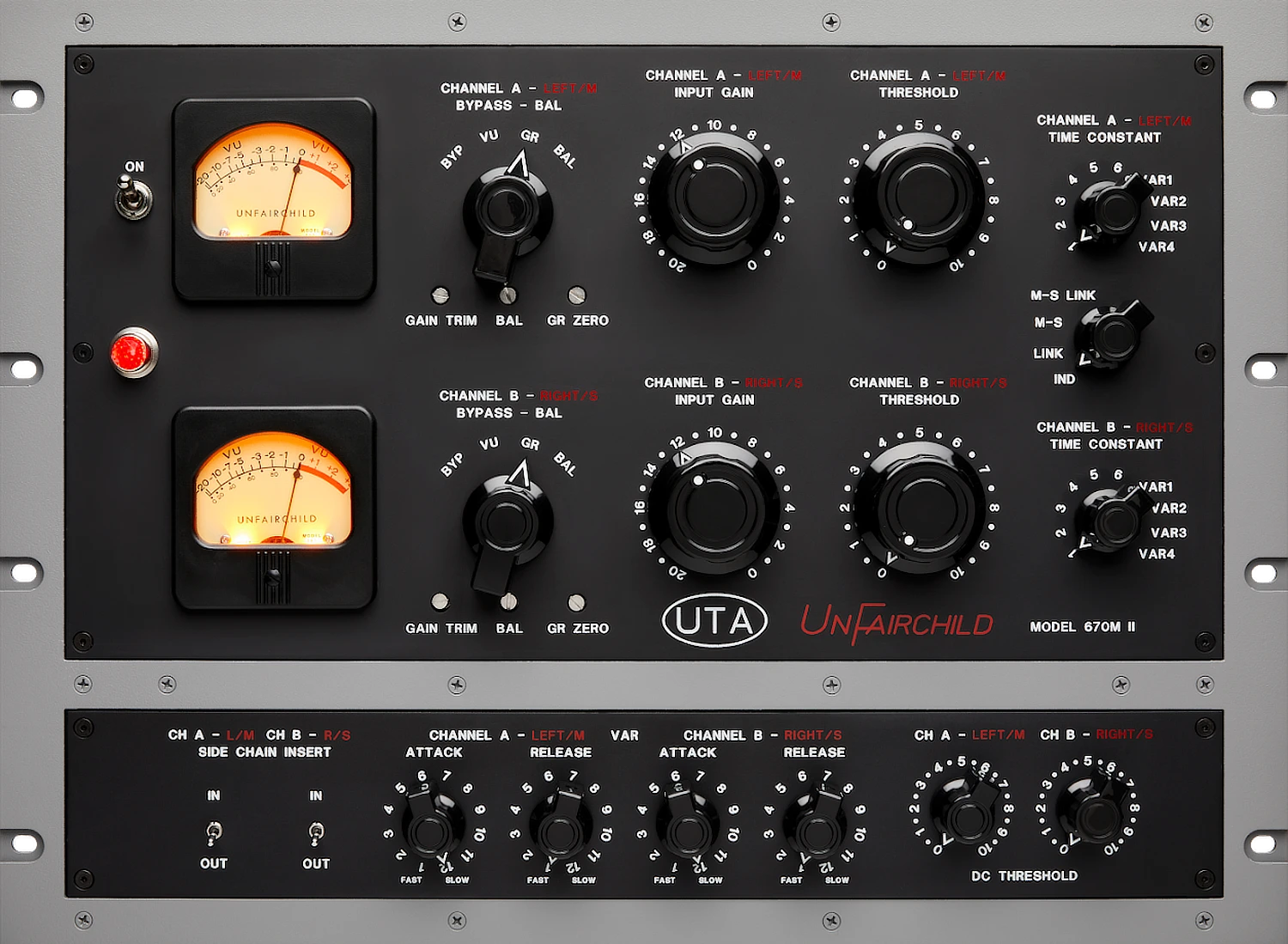The Fairchild 660 was the first intelligent automatic volume control limiter. Shortly after its release, the Fairchild 670, a dual-channel version, was introduced. Due to their rarity, Fairchild compressors have become highly sought-after and incredibly valuable, with used Fairchild 660 units selling for over US$20,000 and 670 units fetching between US$30,000 and US$40,000 or more. These compressors are often considered the “holy grail” of outboard gear.
The Fairchild 660 was designed by Rein Narma, who had previously collaborated with Les Paul to build a recording mixer for Paul’s Ampex 8-track system. Les Paul then asked Narma to create a compressor/limiter. Sherman Fairchild, a friend of Les Paul’s, became aware of Narma’s design and decided to license it, subsequently hiring Narma as the chief engineer at Fairchild Recording Equipment Corporation.
The first 10 Fairchild 660 units were built by Narma himself. The first unit was sold to Rudy Van Gelder, who used it to cut lacquer masters for Blue Note and Vox Records. The second went to Olmsted Sound Studios in New York City, and the third was purchased by Mary Ford and Les Paul.
The mono Fairchild 660 and dual-channel 670 are versatile compressors that can operate with a compression ratio ranging from 2:1, with a threshold of 5 dB below normal program level, to a peak limiter with a ratio of 30:1, and a threshold of 10 dB above normal program level. Both units use a single push-pull amplification stage and a high control voltage, which results in a signature sound free of audible thumps, with exceptionally low distortion and noise.
The Fairchild 660 and Fairchild 670 feature a rapid attack time capable of full limiting within 1/10,000 of a second. This fast attack is paired with six variable release timing curves, three of which adjust automatically based on the amount of limiting, making the Fairchild 660 the first compressor/limiter to include automatic variable release time.
The Fairchild 660 has controls for input gain, threshold, and time constant, (while the Fairchild 670 offers the flexibility to be used as two independent limiters or as a vertical and lateral (sum and difference) component limiter).
Abbey Road Studios purchased 12 Fairchild 660s after staff engineer Peter Bown encountered the unit during a visit to Capitol Records in the U.S. These compressors were used extensively in recording sessions for the Beatles, particularly for vocal tracks. Starting in 1966, Geoff Emerick expanded their use, applying the Fairchild 660 to Ringo Starr’s drum tracks, as well as on piano and guitar recordings. Remarkably, as of 2014, Abbey Road still retained 8 of the original 660 units purchased in the 1960s.
Fairchild 660/670 Brochure Text
If you examine any monophonic or stereo record or tape available today, from any major label throughout the world, it undoubtedly uses a Fairchild Limiter in its production somewhere along the line. More and more companies throughout the world specify and use the Fairchild limiters, Model 660 or 670, for the following reasons:
- Complete absence of audible thumps normally associated with other limiter designs and a complete absence of distortion or noise usually associated with conventional limiters.
- Extremely fast attack time – the Fairchild 660 or 670 can produce full limiting in the first 5,000th of a second.
- Variable release time. The Fairchild 660 or 670 allows a variable release from 0.3 to 25 seconds, conveniently adjustable on the front panel with a 6-position switch.
- Can be used as a limiter or a compressor depending on program material and personal preference.
- Reliability and stability.
- Two models available: single-channel Model 660 or the unique stereo Model 670.
The Fairchild Limiter is available in two versions – the monophonic single-channel unit, the Model 660, and the unique stereo version, the Model 670. The following basic design points apply to both.
The basic design uses a single push-pull stage of amplification with an extremely high control voltage. The result: the unit never produces any audible or observable thumps and, unlike other conventionally designed limiters, the unit has extremely low distortion and noise under all conditions, either as a limiter or as a straight-through amplifier.
The fast attack time catches short transients that can, in other limiters, engage the limiting effect. The release time of 0.3 to 25 seconds provides real flexibility. Three positions (six are available) make the release time a function of program material, with fast recovery for short transient peaks and overall reduction of program level should the program level remain high.
Ample and accessible input controls, threshold controls, attack, and release time and metering controls.
The unit can be used as a limiter or compressor, depending on personal taste and program material. A 2 to 1 ratio as a compressor with a threshold 5 dB below average level, and a peak limiter with a 30 to 1 ratio with a threshold 10 dB above normal program level. The unit can also be adjusted to operate anywhere between these two extremes.
Reliability and stability: all components operate well below their rated maximums, ensuring trouble-free performance and day-in, day-out reliability. Masters made one day can be duplicated months later with the same control settings.
Two models are available: the single-channel monophonic version, Model 660, or the versatile two-channel stereo version, Model 670.
In addition, the Model 670 is designed specifically for stereo level control problems. The 670 on one chassis incorporates four independent limiters that will act on left and right channels or which will act on the lateral and vertical (sum and difference) components of the two stereo channels. This latter function is achieved by first splitting the two stereo channels through a matrixing network and then dividing them into their respective lateral and vertical components, limiting these lateral and vertical components, and then recombining through a second matrixing network into left and right channels again.
Using this Fairchild matrix limiter design, thousands upon thousands of stereo masters have been cut with maximum usable level and efficient use of available groove space, resulting in high-level recordings with long playing times. This Limit-Matrix system of the 670 now finds the same importance in the new era of stereo broadcasting. No wonder that the Fairchild limiters are used by the major labels and major recording services and quality-conscious radio stations throughout the world.


















